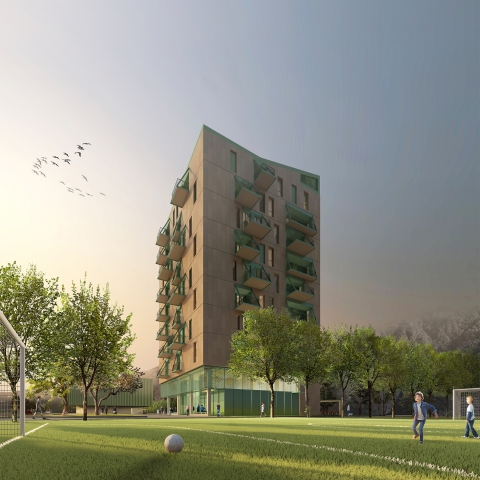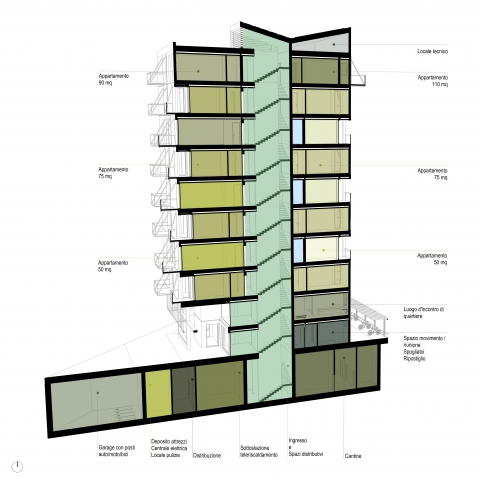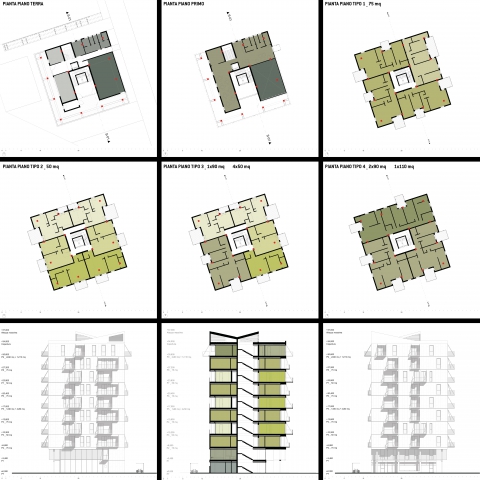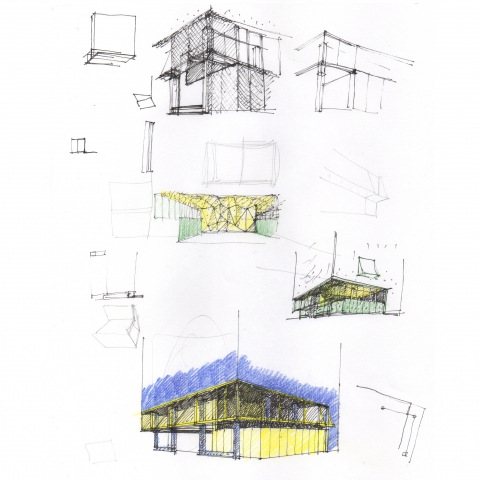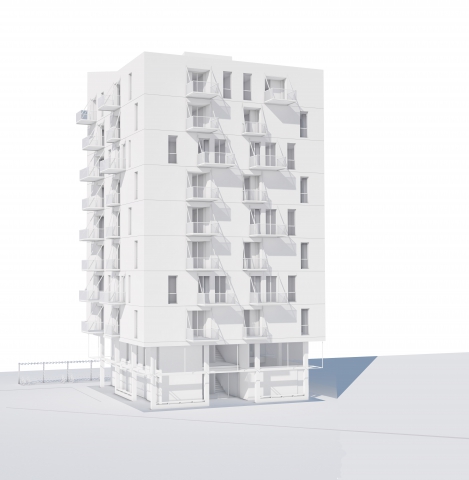Competition _ Ipes Bolzano _ 11-storey timber building _ Bolzano [BO]
LOCATION: Bolzano (BO) _ zona Prati di Gries
CATEGORY: Housing
STATUS: Project competition
YEAR: February - June 2020
AUCTIONEER: Istituto per l'Edilizia Sociale della Provincia Autonoma di Bolzano
PROJECT: MFa _ Mauro Frate architects
TEAM: arch. Mauro Frate, con arch. Francesca Riva e arch. Nicola Rossi
STRUCTURE: Ergodomus Timber Engineering, Pergine Valsugana (TN)
TECHNOLOGY SYSTEMS: ing. Alessandro Bacciconi, Verona (VR)
ENERGY ENGENEERING: arch. Giuseppe Ottaviani Verona (VR)
FIRE SAFETY ENGINEERING: ing. Enrico Pellizzaro LevicoTerme (TN)
DESIGN WITH THE CLIMATE
The future of cities depends on our ability to help them adapt to the major changes taking place. These are now deeply intertwined in a kind of inextricable knot: the environmental crisis, the effect of the reduction of resources, climate change, the economic and social crisis in countries that have grown up on welfare, are represented overall in the crisis of urban space, which manifests them but also feeds them. It is clearly not possible to make a major contribution to these major issues, but we have the opportunity to infer deeply on the reality of urban space, with policies and projects. It is necessary to do this by demonstrating the ability to interpret the spatial, social, microeconomic and environmental contexts within which to place projects. It is essential to act simultaneously on different planes at different scales.
The energy consumption related to civil construction is among the most significant, addressing the issue cannot be entrusted only to the choices related to systems solutions. It is a question of assuming the sun, the wind, the water as determining form factors: the overall stereometry structure of the project must be urged, from the initial stages and, when necessary, to modify the architectural solutions according to the search for the best performance of the artifact. It is not, however, a question of carrying out a accounting operation around performance, but rather of the adequacy and appropriateness of the technologies. There is often a gap between the objectives generally set for the construction of a complex artefact such as a building (minimization of production costs, maximization of productivity) and the real needs of cities and their populations; the recognition of this divergence, between the needs of economic and social development of a territory and the requirements of economic and organizational rationality has led to the definition of the concept of the appropriateness of technology.
The search for appropriateness of this project is based on the awareness that today industrialised building of an open type can be a response to a demand for buildings at affordable costs and with reduced construction times, but with high performance, from acoustic to thermal comfort, and with low management costs. At the same time, the use of prefabrication can also be a stimulus to technological innovation, extremely urgent and healthy for the construction world.
CATEGORY: Housing
STATUS: Project competition
YEAR: February - June 2020
AUCTIONEER: Istituto per l'Edilizia Sociale della Provincia Autonoma di Bolzano
PROJECT: MFa _ Mauro Frate architects
TEAM: arch. Mauro Frate, con arch. Francesca Riva e arch. Nicola Rossi
STRUCTURE: Ergodomus Timber Engineering, Pergine Valsugana (TN)
TECHNOLOGY SYSTEMS: ing. Alessandro Bacciconi, Verona (VR)
ENERGY ENGENEERING: arch. Giuseppe Ottaviani Verona (VR)
FIRE SAFETY ENGINEERING: ing. Enrico Pellizzaro LevicoTerme (TN)
DESIGN WITH THE CLIMATE
The future of cities depends on our ability to help them adapt to the major changes taking place. These are now deeply intertwined in a kind of inextricable knot: the environmental crisis, the effect of the reduction of resources, climate change, the economic and social crisis in countries that have grown up on welfare, are represented overall in the crisis of urban space, which manifests them but also feeds them. It is clearly not possible to make a major contribution to these major issues, but we have the opportunity to infer deeply on the reality of urban space, with policies and projects. It is necessary to do this by demonstrating the ability to interpret the spatial, social, microeconomic and environmental contexts within which to place projects. It is essential to act simultaneously on different planes at different scales.
The energy consumption related to civil construction is among the most significant, addressing the issue cannot be entrusted only to the choices related to systems solutions. It is a question of assuming the sun, the wind, the water as determining form factors: the overall stereometry structure of the project must be urged, from the initial stages and, when necessary, to modify the architectural solutions according to the search for the best performance of the artifact. It is not, however, a question of carrying out a accounting operation around performance, but rather of the adequacy and appropriateness of the technologies. There is often a gap between the objectives generally set for the construction of a complex artefact such as a building (minimization of production costs, maximization of productivity) and the real needs of cities and their populations; the recognition of this divergence, between the needs of economic and social development of a territory and the requirements of economic and organizational rationality has led to the definition of the concept of the appropriateness of technology.
The search for appropriateness of this project is based on the awareness that today industrialised building of an open type can be a response to a demand for buildings at affordable costs and with reduced construction times, but with high performance, from acoustic to thermal comfort, and with low management costs. At the same time, the use of prefabrication can also be a stimulus to technological innovation, extremely urgent and healthy for the construction world.

